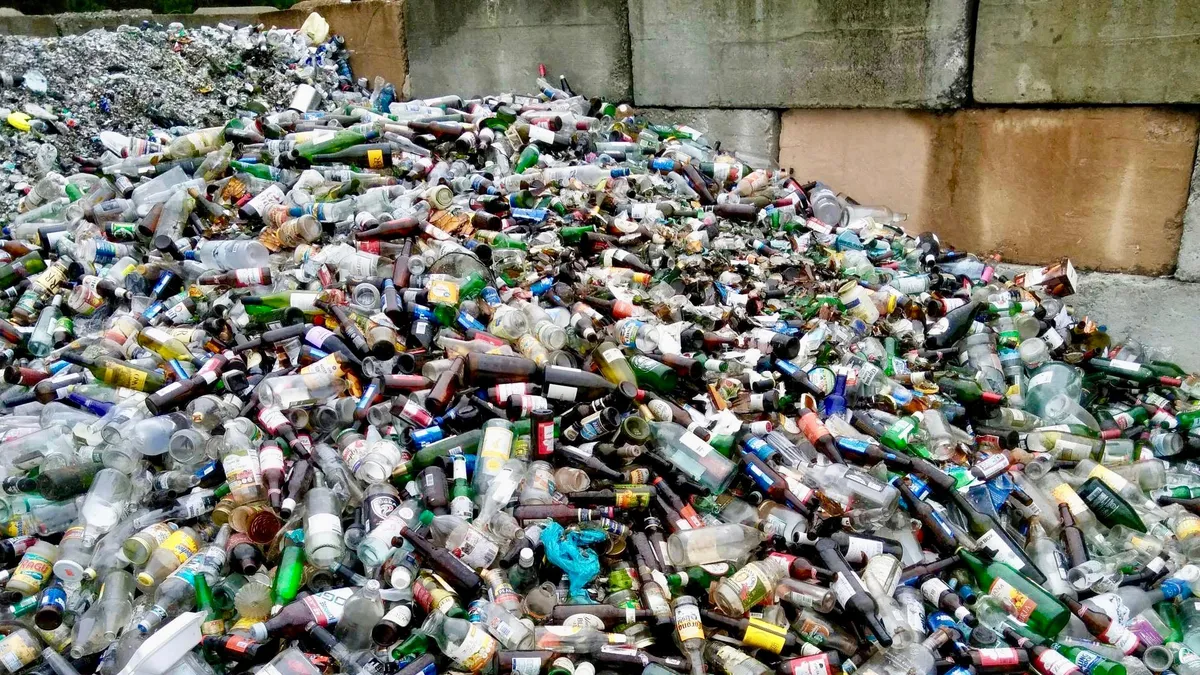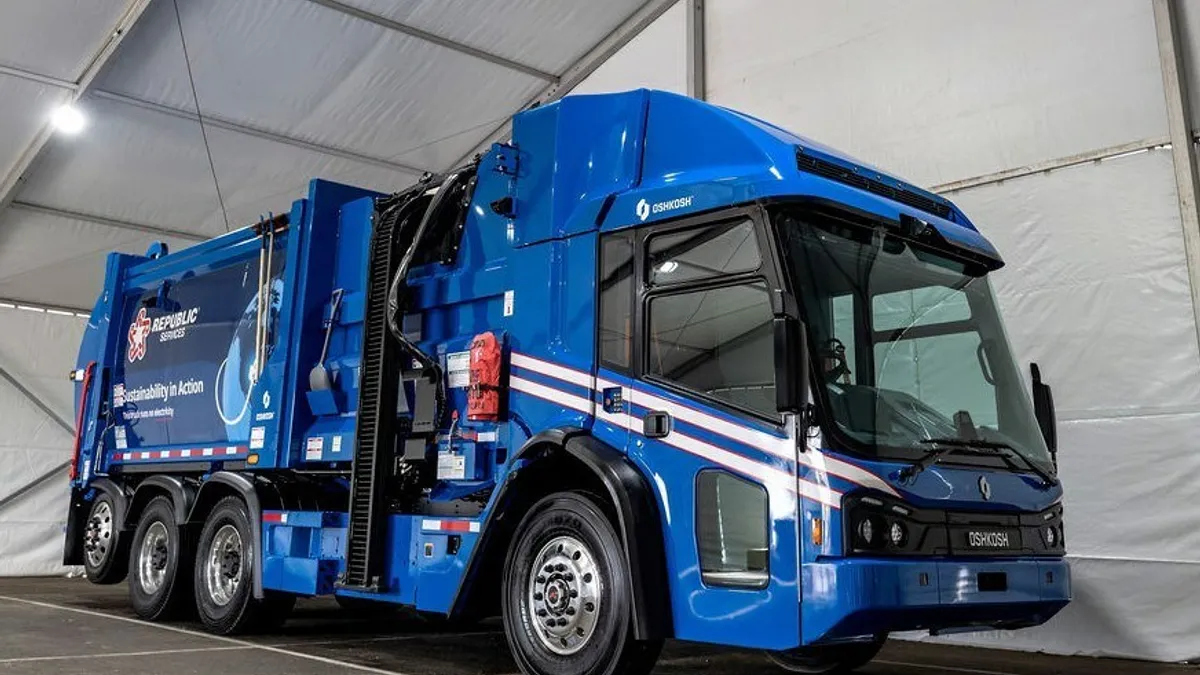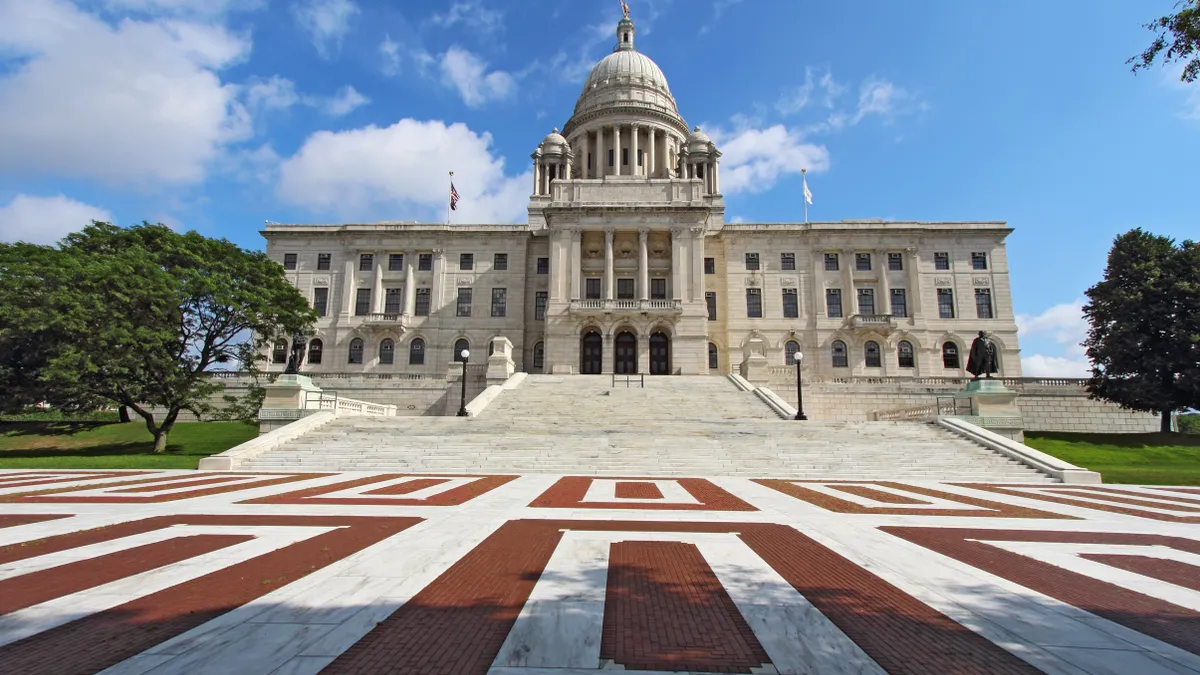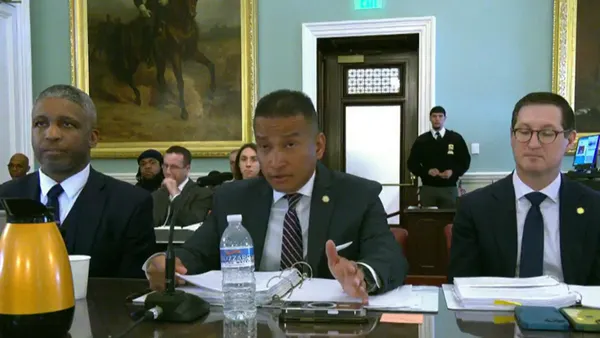The following is a contributed piece and does not reflect an editorial position by Waste Dive. Information on what that entails and how you can submit is available here.
Glass is the most beautiful of recycled materials. It is homegrown, infinitely recyclable, saves significant amounts of energy and allows multimillion-dollar furnace equipment to last years longer compared with using virgin materials in production.
Glass processors meet tight industry specifications for manufacturing bottles, insulation and abrasives. Their material is also commonly used in foundations for building and road construction, as well as clean fill. Windowpane and auto glass is used for manufacturing road reflectors and safety equipment for fire and emergency workers. Glass recycling is also rich with jobs. According to Strategic Materials, its plant in Wilson, North Carolina processes 100,000 tons annually and ships to plants that employ 2,300 workers in the region.
Today, according to the most recent U.S. EPA data, an estimated 33% of glass containers are recycled. That is about half the level of paper and metal recycling. New glass containers can be made with up to 90% recycled glass. The industry would like to reach this goal, but today’s recycling systems make this impossible.
Two companies have notably implemented long distance programs to retrieve more glass for their customers. Momentum Recycling, based in Utah, recovers glass from around the region. Ripple Glass, based in Missouri, recovers glass from as far as Fayetteville, Arkansas. Strategic Materials is exploring rail haul of aggregated glass from the Baltimore-Washington, D.C. area, 250 miles from its plant in North Carolina.
Some companies have also offered to rent land from cities, install equipment and pay municipal workers to aggregate glass at a cost to the city of just $20 per ton. Disposing glass in a landfill or sending it to a single-stream MRF can cost a city seven times that amount in some cases.
So why is this vibrant array of industries coming up short on glass supplies?
Glass is being dropped from single-stream recycling systems around the country because of the demands of Big Waste processors. If cities do not drop glass from their programs, stiff fees are often imposed.
D.C. pays a $25 per ton surcharge on glass in its single-stream materials. Scores of cities have dropped glass from their programs even though it accounts for 20 to 25% of the stream in many areas. While smaller processors regularly recover usable glass, Big Waste processors claim the wear and tear on their equipment is too expensive. For those that do recover it, the material is often not in good enough condition to meet industry requirements. Instead, recovered glass is often used – as a free resource – for landfill cover and internal landfill roadways. Cities and businesses pay the bill.
These companies cover their inability to reach state-of-the-art processing by claiming that there are no markets for the material, or that their facilities are too small. Based on conversations with a variety of processing companies and public facility managers in North Carolina, Iowa, Oklahoma and Maryland, the consensus is that the size of processing plants is not the problem.
The key determinant is whether or not these companies actually want to recover glass.
Companies that want more glass are reluctant to complain publicly about the orchestrated shortage of the raw material. Iconic glass processor Murray Fox, co-founder of REI Distributors, once explained that he and other processors could never come out in favor of container legislation – the most efficient way to recover clean post-consumer glass – because they would be cut off completely from any supply of raw material.
How can a recycling system sacrifice one-quarter of its material to disposal and keep a straight face when it tells citizens that it is trying to recycle more, much less achieve "zero waste"? It can’t. It will have to admit to its failure to adopt best practices that are working elsewhere.
The lack of glass recycling is an insidious cycle of denial, but recent efforts show it can be changed.
In December, the Carolina Recycling Association and North Carolina Department of Environment Assistance and Customer Service hosted the Carolina Glass Recycling Summit at Strategic's glass production plant in Wilson. The meeting brought processors, an array of end market firms, haulers and local government agencies together to address these issues. Throughout the day, the summit laid out how cooperation among stakeholders can meet the challenges in glass recycling.
“It takes time and careful planning with companies and government agencies, but it can and has been done," said Bill Clark of Strategic Materials. "Rural areas can use drop-off in roll-off or cement bunkers located at staffed waste and recycling convenience centers. Urban areas can combine drop-off, commercial and curbside programs.”
In addition, he pointed to two primary factors that go into making the program successful. First, if the only option is to remove glass from a traditional single-stream curbside program, then quality of glass and volumes help make economic sense for all parties. Second, if removing glass from the program isn’t a solution, the next best step is to make sure the hauler and MRF operator make upgrades to equipment and process changes to recover industrial-grade glass.
For any communities looking to enhance their efforts, the glass industry's nonprofit Glass Recycling Foundation may be one option. The group provides funds for local demonstration or pilot projects and targeted assistance “that address the gaps in glass recycling supply chain across the United States.”
Neil Seldman is a co-founder of the Institute for Local Self-Reliance and director of its Waste to Wealth program. Part of this work involves consulting with local governments, including Baltimore and Washington, D.C., on their recycling efforts.





















